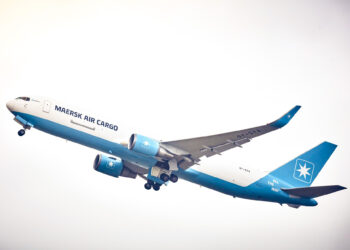No products in the cart.
Is Moscow the new Gulf?
As we have often pointed out in recent posts, growth in demand for air freight has stalled in the Gulf Region, with both Emirates and Etihad reporting low-single-digit year-over-year gains for much of this year. But 4,000 km to the north, Moscow-based carriers AirBridgeCargo Airlines (ABC), and Aeroflot are racking up astonishing growth numbers.
AirBridge, the scheduled-service subsidiary of Volga-Dnepr Group, reported its October cargo volume up 30% y-o-y to 58,000 tonnes. For the first ten months of 2016, ABC’s cargo volume was up 29% over the same period in 2015 to 498,000 tonnes. But, more significantly, ABC’s ten-month total this year is already up 3% over its full-year 2015 total – and 2015’s total was up more than 20% from 2014, which in turn was up 18% over 2013.
In fact, for the last ten years – the period from 2007 through 2016 – AirBridge’s cargo volume has been growing at an average annual rate of 23.4%.
Russia’s other big cargo carrier, Aeroflot, is also doing very well lately. Aeroflot’s cargo volume took a big hit in 2013, when it abandoned freighter operations and parked its three MD-11Fs. But with that impact long since washed out of year-over-year comparisons, the carrier is now reporting gains on par with, or even stronger than, AirBridge.
For the first three quarters of 2016, Aeroflot’s cargo traffic grew 30.7% to 611 million RTKs. The traffic growth was led by a 59.3% jump in domestic traffic to 315 million RTKs, while international traffic grew by a still respectable 9.7% to 270 million RTKs. Cargo volume for the nine-month period was up 24.1% to 140,000 tonnes. And the gains do not appear to have come at the expense of yield, as Aeroflot reported cargo revenue for the nine months up 27.1% to US$128 million
But as strong as Aeroflot’s cargo growth was for the first three quarters, its October numbers are in another league entirely. For October, Aeroflot reported Group cargo traffic up 68.9% y-o-y to 98.8 million RTKs. The October growth was led by a doubling (99.3% increase) of international traffic to 54.4 million RTKs, while domestic traffic was up 42.3% to 44.4 million RTKs.
Of course, growth at this rate cannot continue indefinitely. At a 30% compound annual growth rate, the Russian carriers’ cargo volume would double every three-and-one-half years, and soon they would be carrying every kilo of air freight in the world. Obviously, at some point, the growth will level out, but in the meantime, AirBridge and Aeroflot have clearly taken over the role of growth leaders that once belonged to carriers in the Gulf Region.




